VIDEO NASTIES: MORAL PANIC, CENSORSHIP AND VIDEOTAPE
Our society is under attack.
Everything you hold dear is about to be destroyed. There is something in our midst with the power to do just that. We all know what this thing is. Some of us may have even tolerated it, underestimating it, thinking it's just a fad or a passing craze. But, Dear Reader, it is more than that. It possesses the power to corrupt our children, to cause our moral and ethical fibers to turn to dust. It is eating at us at this very moment, but we don't recognize it as a genuine threat. If we don't stop it now, not soon but now, it will be too late.
What is this thing, this devil in our midst? Well, depending upon your generation, it may have been alcohol or rock and roll, comic books or video games, Communism or atheism, gay marriage, or women's rights. What it is may change with the tides of time, but its presence is permanent. It is the threat. That threat existed in Britain in the early 1980s, sneaking quietly, almost imperceptibly, into the homes of thousands.
It was videotape.
The Video Nasty scandal that erupted in Britain in the 1980s is a prime example of a Moral Panic. The suppression of violent and sexual films distributed widely and without regulation at the dawn of the age of the home video cassette player will probably be well known to many of you. However, the lengths and means the moral majority took to ensure that no one, adults and children alike, could lay their hands on this "vile filth" are perhaps a bit more complicated than you know. Jake West's excellent documentary VIDEO NASTIES: MORAL PANIC, CENSORSHIP, AND VIDEOTAPE lay all the facts on the table, allowing both sides of the argument to present their case. What emerges is a tale of censorship horror, government abuses, rank immaturity, and ignorance on a scale that meets anything found within the pages of Fahrenheit 451.

That is not hyperbole. That is a fact. What transpired during the Video Nasty scandal was a gross misuse of the time, energy, and expenses of both the government and the police force. Video dealers, honest folks out to raise a few pounds, were harassed, threatened, and fined. Distributors were forced to turn over a large percentage of their stock to the police for disposal. Accusations of snuff videos and child pornography were fed to the public by unscrupulous newspapers. False studies were produced to show the damaging effects of violent material on innocent minds. All over Britain, the adult viewers were being told, in no uncertain terms, what they may or may not watch in the comfort of their own homes.
I had heard about the Video Nasty debacle when I was a teenager. It seemed absurd that anyone would have had such a ridiculous reaction to the videos I was watching daily. I felt perhaps a bit spoiled by it all. I relished the idea that my local video store was my playground. I was allowed by the local video store to rent any movie I wanted. As an insatiable 13-year-old, I watched exploitation, horror, and shockumentaries at a rather frantic pace. I rented softcore pornography (the only kind of pornography the store stocked). I rented Mondo films. I saw things most parents wouldn't want their children to see.
That was not gross negligence on the part of my parents. When I was even younger, my parents talked to me about the difference between the reality around me and the false reality on my television screen. I was not oblivious to the utter immorality of the actions the various antagonists (and protagonists) carried out in these films. My parents used the medium to teach me ethical and moral lessons. They prepared me for what I would see.
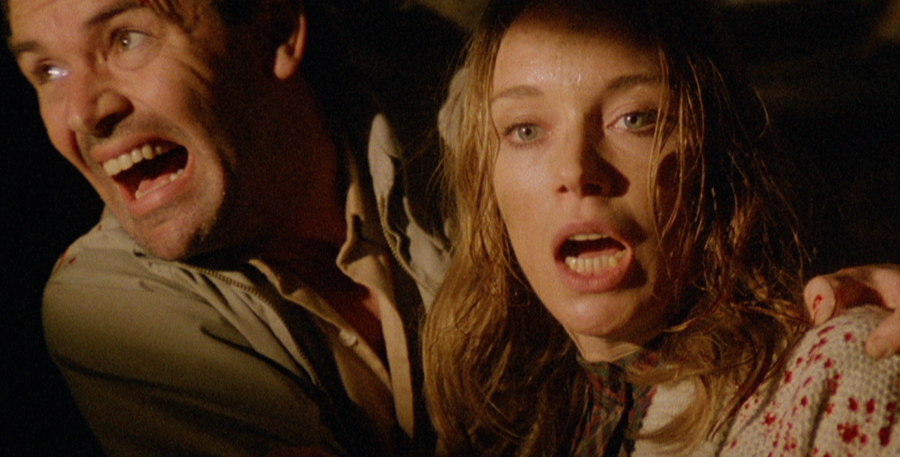
When I first heard the claims that violent media results in violent individuals, I was thoroughly perplexed. Here I was, spending 30 or so hours a week sitting in front of the television watching all manner of violence and deviant sexuality. But I was not by any stretch of the term a violent person. I never thought about slitting anyone's throat or raping my next-door neighbor. Nor was I in any way immune to feeling shocked when presented with real-life images of murder and mayhem. I was not mute in the face of carnage. So how did I succeed in escaping the unavoidable side effects of a daily diet of video violence?
To this date, no conclusive studies demonstrate a causal link between exposure to violent media and increased violent tendencies. Despite this, every violent event brings yet another round of media scrutiny. We learn what every shooter or terrorist had on their Netflix watch list, what games they recently played, or what books they got out of the library. Why? What does that matter if there's no link between violent media and violent actions?
Many people deny that separation between art and action exists and that was precisely the matter at the heart of the Video Nasty scandal. People all over Britain, even in the houses of Parliament, accepted that causal link. They believed, powerfully, to absolute certainty, that exposure to these films would lead their children to inhumanity and violent psychopathy.
A very simplified version of the facts is as follows: when videotape first appeared in the marketplace in 1979, home video releases were free from regulation. While cinema releases were subject to the British Board of Film Classification (known then as the British Board of Film Censors), home video releases were not. That allowed for a flooded marketplace. Because of the sudden and profound popularity of the new medium, hundreds of small, independent video rental stores opened up all over the place. The owners would buy whatever was on offer from the distributors. As a result, many uncut horror and exploitation titles ended up sitting alongside family fare on rental shelves across the country.
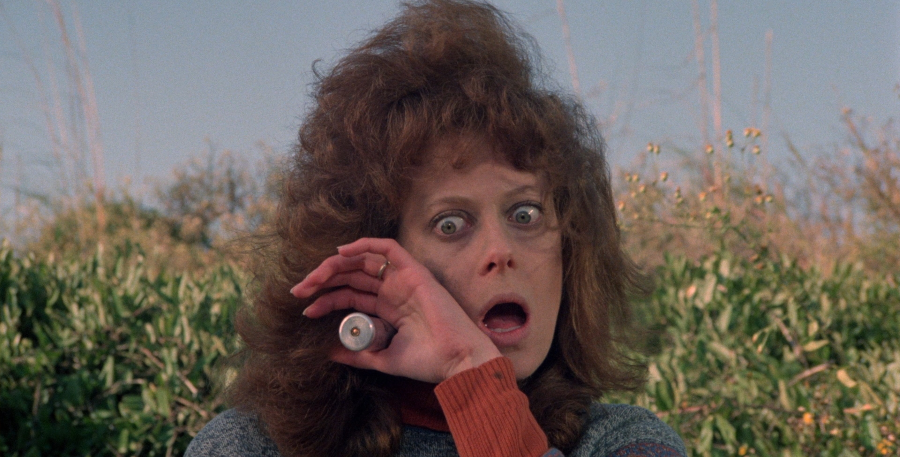
Everything went smoothly and profitably for everyone involved until Mary Whitehouse became aware of the existence of these graphic videotapes. Whitehouse, the founder of the National Viewers' and Listeners' Association, a media watchdog group, and a conservative Christian, decided to make removing this material from video stores a top priority.
In 1982, police began confiscating and destroying videotapes as the media blitz surrounding the growing controversy reached new heights. It didn't take long before the Director of Public Prosecutions (DPP) began trying to get individual films prosecuted under the Obscene Publications Act (OPA), a 1959 Act of Parliament that prohibited the distribution of "obscene material" (specifically sexual material). As the OPA had been amended in 1977 to cover the release of pornographic films, it made perfect sense to try and use it to censor and ban violent films. Having won prosecution against a selection of films in test trials, The DPP drew up a list of titles (at the behest of the Video Retailers Association) to be seized from all dealers, distribution houses, and homes. That list of titles is what we now refer to as the DPP Video Nasties list.
In 1983, at the urging of Whitehouse, a Conservative MP by the name of Graham Bright introduced to the House of Commons a Private Member's Bill. It passed with relative ease. The resulting legislation was known as the Video Recordings Act (VRA) of 1984. Going into effect in September the following year, the VRA required all titles released before 1985 to be resubmitted to the BBFC for new home video classification.
Because the focus of the VRA was to keep offensive material away from children, the standards for film classification were different for home video releases than for cinema releases. That meant that while a film may have played uncut in cinemas, it may require censorship trims for home video release. Anyone caught releasing or distributing an unclassified videotape would be subject to hefty fines and the possibility of being jailed for a maximum of two years.
Let that sink in for a moment. Selling or renting out an unclassified or uncut videotape became a criminal offense.
While the previous paragraphs are a total oversimplification of the events that transpired in the early 1980s, none of the details are spared in VIDEO NASTIES: MORAL PANIC, CENSORSHIP, AND VIDEOTAPE. In addition to interviews with genre film critics like Kim Newman and Stephen Thrower, political figures like Graham Bright and Peter Kruger (ex-head of the Obscene Publications Squad) argue their case. Both men maintain they were doing the right thing in their quest to rid Britain of trash horror films.
The most informative voice belongs to Martin Barker, one of the few journalists to stand up to the propaganda squad and try to voice a little reason amidst all the outrage. Barker's insights are poignant and timely, well worth the price of admission. What may seem baffling in hindsight is brought to vivid life by director Jake West and stands as perhaps the definitive documentary study on the topic.
While censorship standards have become much more relaxed in Britain since 1985 (many of the Video Nasties have since been re-classified and released uncut), the scandal that erupted in that half-decade stands as one of the best examples of what happens when paranoia trumps reason. Something so seemingly innocent as providing someone access to a video cassette resulted in imprisonment and crippling fines. When people think of misuse of government power, they tend to think large. Compared to military operations, seizing and banning videotapes looks downright trivial. But the idea of anyone in power deciding what an adult can or cannot see in the comfort of their own home should be terrifying to anyone who values individual liberties and the exercise of their intellect. We're not discussing illegal pornography or snuff, but fictional, sometimes studio-produced horror movies. It's not too far of a fall from banning videotapes to banning books, banning free expression, convicting people of thought crime, and so on and so on.
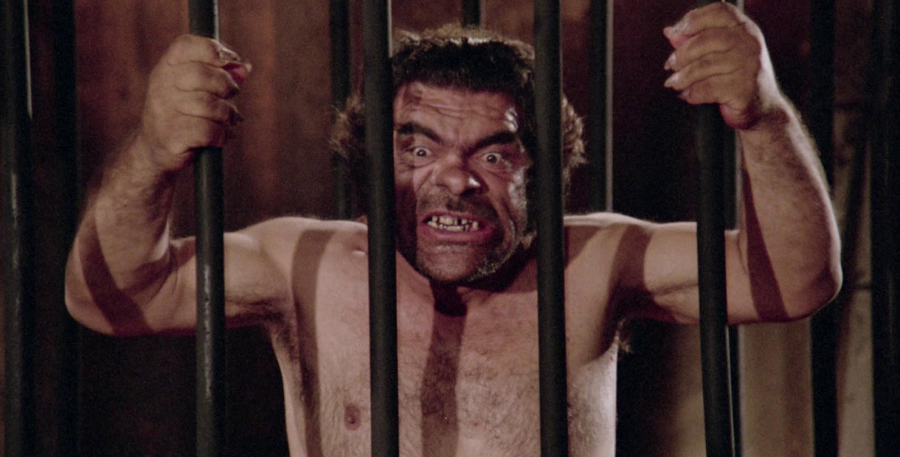
Now that sounds like a paranoid reaction on my part, a private Moral Panic even, but to think that would be to ignore what was really at the heart of the Video Nasty scandal. It wasn't just trying to clean the streets of disgusting films full of mutilated latex bodies and animal innards. The Video Nasty scandal was about trying to force a singular Christian conservative viewpoint onto everyone else, demanding others to live their lives in a homogenized, specific way. It was the desire to legislate their morality and personal ethics onto the rest of the population. And they were victorious.
That should terrify and frustrate anyone who holds the notion of individual liberties dear. The Video Nasty scandal was a small event in the grand history of things, but it proved a point. This particular kind of injustice isn't just possible but probable. Pro-censorship advocates like to think they're doing something good without allowing the possibility that people will figure that out on their own. It's the removal of choice. It's a limiting of someone's freedom to choose. There is nothing more repulsive than someone who thinks they know you better than you know yourself, even more so when they're masquerading under the banner of proper morality and intellectualism.
We always need a scapegoat, someone to point the finger at, something to accuse. Centuries ago, we burned and stoned and hanged women for spreading disease and ill luck through the dark powers of witchcraft. We drilled holes in people's heads to release the demons giving them tremors. We have done this time and time again throughout human history. The societal troubles present in the early 80s in the UK were deep. The Winter of Discontent had given way to high unemployment and rioting. These problems needed an explanation. The Video Nasty provided a distraction and a new cause to be rallied around. Another boogeyman crept out of the shadows.
Even after the scandal had calmed down, the stigma remained. The idea of snuff videos (somewhat of a preoccupation for the British press even before the Video Nasty days) still existed, popping up again and again in the newspapers. The death of 14-year-old Jason Swift in 1985 at the hands of pedophiles fueled rumors that his sexually motivated murder was videotaped as part of a snuff production. The Sun, The Daily Star, The Independent, and The Guardian all fell victim to this sensationalism.
In 1992, trading standards officers and police raided the homes of video collectors across Britain, snagging hundreds of videotapes, including many Video Nasties. The Star (May 8, 1992) quickly publicized the findings under the headline "Snuffed Out: Cops Swoop to Seize 3000 Sick Killer Videos", falsely stating that snuff movies were found during the raids. That same day, The Daily Express and the Evening Standard ran similar pieces with erroneous findings. Raids of this kind were carried out routinely over the next couple of years. None of them ever turned up a snuff film. But that didn't stop the press. Snuff was well and alive in the British subconscious. Wiping out the Nasties did nothing to stop the fear of videotape.
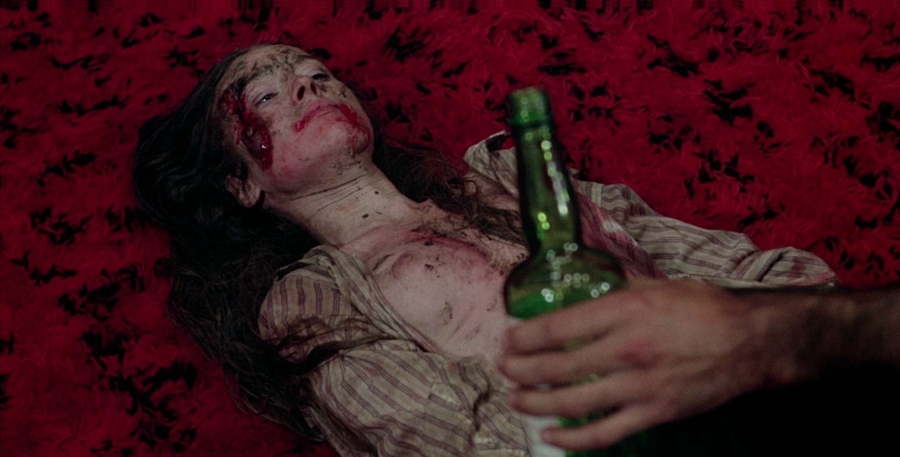
There was a brief return to the Video Nasty craze in 1993 when the broken, beaten corpse of a two-year-old boy named James Bulger was discovered in Walton, Liverpool. People were undeniably shocked to find that the men responsible for the death of this young boy weren't men at all. They were two young boys, Robert Thompson and Jon Venables, both ten years old. How these two young children could have even thought of the horrors they unleashed upon young James Bulger couldn't be explained. But a search of one of the killer's homes revealed what seemed to be the answer. Police discovered a copy of CHILD'S PLAY 3. Immediately, the cycle began to repeat itself in the newspapers. The boogeyman had risen from the grave to poison the minds of children.
At some point, the scapegoating will end. At some point, we will learn that answers are rarely neatly packaged. VIDEO NASTIES: MORAL PANIC, CENSORSHIP, AND VIDEOTAPE feature scores of academics, politicians, and police officials who somehow managed to escape the evil influence of these films through the years. The growling hypocrisy of the argument that these films will corrupt all who see them is evident, but it also demonstrates a serious distrust of our fellow human beings. What lit the fires of the Inquisition was an idea of moral superiority mixed with a potent brew of fear, superstition, and irrational overreaction. Today, we laugh at the idea that someone would think anything in films like CANNIBAL FEROX or SNUFF was real, but these people genuinely believed they were. I don't necessarily fault them for doing what they thought was right, but they went about it in all the wrong ways. Worse, their course of action set a dangerous precedent. Once we stop chasing down the phantom menace and stop pointing fingers, we can mature. We can find answers. We can progress beyond fear-mongering and paranoia.
The existence of the internet has rendered much of the argument over censorship obsolete. Video is no longer the only way for films to propagate. P2P file sharing guarantees the spread of unaltered, unedited films. Actual violence and hardcore sex lurk around every corner of the World Wide Web. With a mouse click, you can see beheadings and mass orgies. The internet has been with us for quite some time now. The world has yet to end. Exposure to violent and sexual material is at an all-time high. Where are the masses of serial killers leaving hundreds dead in their wake? For the film censors in 1985, the Internet experience would stop their hearts. Have we collapsed as a society because of it? Can you name one person who hasn't seen footage of a car accident, an assassination, or a crime scene? Can you name a single person who has not seen true horror?
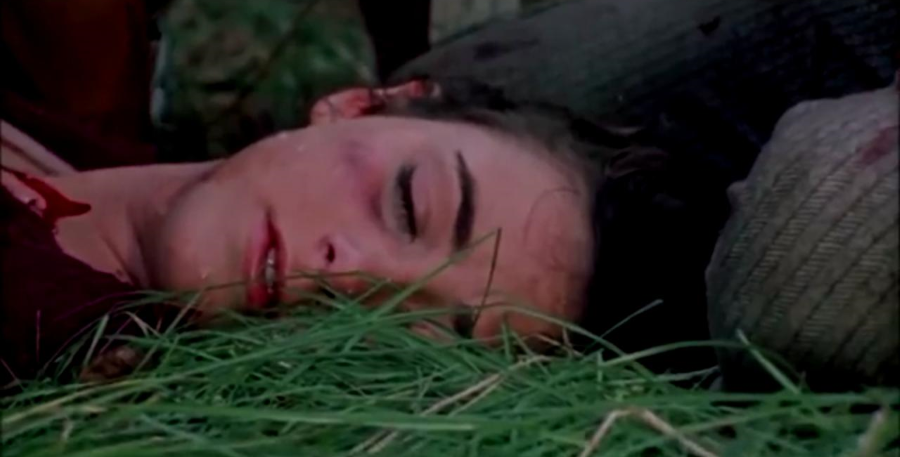
We watched in horror as the World Trade Center was reduced to rubble, but I don't know a single action film fan who thought the images of the planes hitting the towers were "awesome".
I know people who only watch comedies. They're not markedly funnier than anyone else I know.
I don't know anyone who suddenly bursts out in song because they watch countless musicals.
But we have been told countless times that exposure to horror films would result in frothing, blood-thirsty monsters slashing babysitters with kitchen knives. Perhaps that does happen from time to time. Maybe some people are set off by watching these Video Nasties. I would argue that anyone who kills their parents or babysitter after watching a horror film had problems long before they ever pushed play.
If the problem of violent crime was that simple, imagine what we could solve if we just ran Disney movies on all channels 24 hours a day. What if we strapped violent individuals to chairs, a la A CLOCKWORK ORANGE, and force-fed their subconscious a steady diet of bunny rabbits and puppy dogs? Violent crime would disappear. Unfortunately, it is not that simple. Reality seldom is.
Censorship rarely solves the problem it sets out to solve. There are far more pressing concerns in the world that need our attention and to purposefully divert attention towards some kind of phantom boogeyman is not the way to go. And we should take notice of how this all came to pass. We should learn from it. The most remarkable comment in the entirety of Jake West's documentary comes courtesy of Martin Barker:
"...the most interesting thing to me is just how little historical memory we have. The next time there's a panic, we won't remember just how stupid the last one was and how people get away with things. And that to me is the most important lesson about this campaign. The Evangelicals got away with murder, they got away with fraud, and they got away with deceiving people. They now laugh it off and the fact that almost all these films are now available uncut in the public domain... they don't care because they move on. Because what they want to do is to dominate the present and they don't care about history. Critical voices have to care about history. We have to care about the way in which things got controlled in the past because that's when the damage gets done. And if we don't keep that historical memory, we will allow them to do it again next time."
THE DPP VIDEO NASTY LIST
- - SECTION 2 PROSECUTED FILMS -
- ANTHROPOPHAGUS released with approximately 3 minutes of cuts in 2002
- AXE released uncut in 2005 REVIEWED HERE
- BAY OF BLOOD (aka TWITCH OF THE DEATH NERVE) released uncut in 2010
- BLOOD FEAST released uncut in 2005 REVIEWED HERE
- BLOODY MOON released uncut in 2008
- CANNIBAL APOCALYPSE released with 2 seconds of cuts in 2005
- CANNIBAL FEROX released with approximately 5:06 of cuts in 2000
- CANNIBAL HOLOCAUST released with 15 seconds of cuts in 2011. REVIEWED HERE
- CANNIBAL MAN released with 3 seconds of cuts in 1993 REVIEWED HERE
- DEVIL HUNTER released uncut in 2008
- DON'T GO IN THE WOODS released uncut in 2007
- EVILSPEAK released uncut in 1999 REVIEWED HERE
- EXPOSE (aka HOUSE ON STRAW HILL) released with approximately 30 seconds of cuts in 2006
- FACES OF DEATH released with 2:19 of cuts in 2003
- FIGHT FOR YOUR LIFE banned outright
- FLESH FOR FRANKENSTEIN released uncut in 2006
- GESTAPO'S LAST ORGY (aka LAST ORGY OF THE THIRD REICH) banned outright
- HORRIBLE (aka ABSURD) never re-submitted for re-classification
- I SPIT ON YOUR GRAVE released uncut in 2010
- ISLAND OF DEATH released uncut in 2010
- LOVE CAMP 7 banned outright
- MADHOUSE (aka THERE WAS A LITTLE GIRL) released uncut in 2004
- MARDI GRAS MASSACRE banned outrightREVIEWED HERE
- NIGHT OF THE BLOODY APES released with approximately 1 minute of cuts in 1999REVIEWED HERE
- NIGHT OF THE DEMON released with 1:41 of cuts in 1994REVIEWED HERE
- NIGHTMARES IN A DAMAGED BRAIN re-released in original edited form in 2005REVIEWED HERE
- SNUFF passed uncut in 2000
- SS EXPERIMENT CAMP released uncut in 2005
- TENEBRAE released uncut in 2003
- THE BEAST IN HEAT (aka SS HELL CAMP) banned outright
- THE BURNING released uncut in 2001
- THE DRILLER KILLER released uncut in 2002REVIEWED HERE
- THE GHASTLY ONES (aka BLOOD RITES) banned outright
- THE HOUSE BY THE CEMETERY released uncut in 2009
- THE HOUSE ON THE EDGE OF THE PARK released with 11:43 of cuts in 2002
- THE LAST HOUSE ON THE LEFT passed uncut in 2008
- THE WEREWOLF AND THE YETI banned outrightREVIEWED HERE
- TOXIC ZOMBIES (aka FOREST OF FEAR) banned outrightREVIEWED HERE
- ZOMBIE (aka ZOMBIE CREEPING FLESH, aka ZOMBI 2) re-released uncut in 2005
- - SECTION 2 NON-PROSECUTED FILMS -
- BUTCHER, BAKER, NIGHTMARE MAKER (aka NIGHTMARE MAKER, aka NIGHT WARNING) refused a video certificate in 1987REVIEWED HERE
- CANNIBAL TERROR released uncut in 2003
- CONTAMINATION released uncut in 2004REVIEWED HERE
- DEAD & BURIED released uncut in 2004REVIEWED HERE
- DEATH TRAP (aka EATEN ALIVE) released uncut in 2000
- DELIRIUM released with 16 seconds of cuts in 1987
- DON'T GO IN THE HOUSE released with 3:07 of cuts in 1987REVIEWED HERE
- DON'T GO NEAR THE PARK released uncut in 2006REVIEWED HERE
- DON'T LOOK IN THE BASEMENT released uncut in 2005
- FROZEN SCREAM banned outrightREVIEWED HERE
- HELL OF THE LIVING DEAD (aka ZOMBIE CREEPING FLESH) released uncut in 2002
- HUMAN EXPERIMENTS released with 26 seconds of cuts in 1994REVIEWED HERE
- I MISS YOU, HUGS AND KISSES (aka DROP DEAD DEAREST) released with 1:06 of cuts in 1986
- INFERNO released uncut in 2010
- KILLER NUN released uncut in 2006
- MAN FROM DEEP RIVER (aka DEEP RIVER SAVAGES) released with 3:45 of cuts in 2003
- MOUNTAIN OF THE CANNIBAL GOD (aka PRISONER OF THE CANNIBAL GOD) released with 2:06 of cuts in 2001
- NIGHT SCHOOL (aka TERROR EYES) released with 1:16 of cuts in 1987REVIEWED HERE
- NIGHT TRAIN MURDERS (aka LATE NIGHT TRAINS) released uncut in 2008REVIEWED HERE
- POSSESSION released uncut in 1999
- THE BEYOND released uncut in 2001REVIEWED HERE
- THE BOOGEYMAN released uncut in 2000
- THE BOOGEYMAN 2 (REVENGE OF THE BOOGEYMAN) released uncut in 2003
- THE DORM THAT DRIPPED BLOOD (aka PRANKS) released with 10 seconds of cuts in 2001REVIEWED HERE
- THE EVIL DEAD released uncut in 2001REVIEWED HERE
- THE FUNHOUSE released uncut in 1987
- THE LIVING DEAD AT MANCHESTER MORGUE (aka LET SLEEPING CORPSES LIE) released uncut in 2002
- THE SLAYER re-released uncut in 2001REVIEWED HERE
- THE TOOLBOX MURDERS released with 1:46 of cuts in 2000REVIEWED HERE
- THE WITCH WHO CAME FROM THE SEA released uncut in 2006
- UNHINGED released uncut in 2004REVIEWED HERE
- VISITING HOURS released with approximately 2 minutes of cuts in 1986
- WOMEN BEHIND BARS banned outright